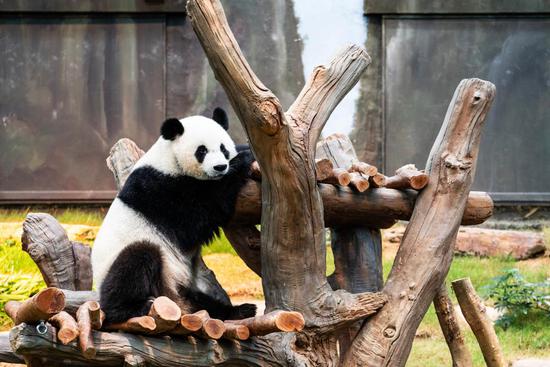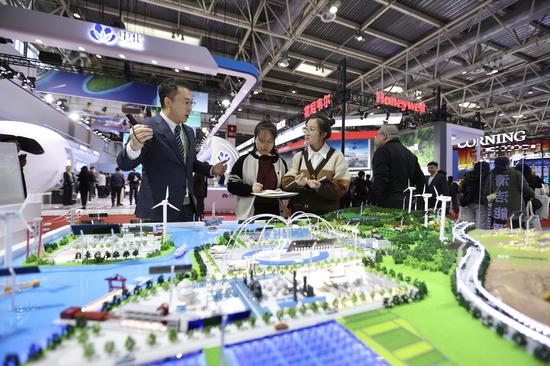South China's Guangdong Province plans to enhance trade and industrial integration with the Macao Special Administrative Region (SAR), officials said on Monday, as trade between Guangdong and Macao in the first 10 months reached 15.88 billion yuan ($2.18 billion) this year, exceeding last year's total.
Guangdong and Macao have deepened their economic links, with trade recording a 25.7 percent year-on-year rise in the first 10 months. The growth is a manifestation of the positive momentum in Guangdong-Macao economic integration, said Zhang Ke, a deputy director of Guangdong Customs.
This year marks the 25th anniversary of Macao's return to the motherland. According to customs data, from 1999 to 2023, total trade between Guangdong and Macao reached 307.29 billion yuan, averaging an annual growth rate of 5.9 percent, Zhang said.
"This rapid growth stems from the accelerated integration of Macao with the Greater Bay Area," Liang Haiming, chairman of the Hong Kong-based China Silk Road iValley Research Institute, told the Global Times on Monday.
The Guangdong-Macao In-Depth Cooperation Zone on Hengqin Island is boosting integration through targeted policies, financial support and resource allocation in tech, finance and culture. Additionally, improved cross-border policies, like streamlined customs and relaxed talent mobility restrictions, will attract high-end talent and businesses to Macao, Liang added.
Against the backdrop of increasing exchanges between the two, the Guangdong-Macao In-Depth Cooperation Zone has drawn growing attention. On March 1 this year, Hengqin implemented a new customs arrangement, enabling most goods from neighboring Macao to move in tax-free.
Under the new measures, tariffs are mostly waived for goods entering from Hengqin to the Chinese mainland, the Xinhua News Agency reported.
With better connectivity via Hengqin Port and the Hong Kong-Zhuhai-Macao Bridge, trade and exchanges between Guangdong and Macao have become more efficient, driving the Greater Bay Area toward greater internationalization and marketization, Zhang Yansheng, chief researcher of the China Center for International Economic Exchanges, told the Global Times on Monday.
Since the implementation of the new customs management system in March, trade between Hengqin and Macao reached 750 million yuan, reflecting a 32.8-percent increase. Zhang noted that this accelerated industrial integration lays the groundwork for a unified Hengqin-Macao development framework.
In addition, people-to-people exchanges between Guangdong and Macao have also been strengthened. As of October 31, nearly 15 million passengers had passed through Hengqin port, according to Yang Hai, a deputy director of Gongbei Customs.
These developments strengthen Macao's role as a hub and provide key support for its economic diversification, while bringing in more tourists, talents, and investment, and promoting growth in industries like tourism, exhibitions and finance, Liang said.
Since the implementation of the policy allowing Macao-registered vehicles to enter the Chinese mainland on January 1, 2023, the region has experienced a significant increase in vehicle traffic. As of October, Gongbei Customs has handled more than 2.38 million vehicle entries. Yang noted that the number of vehicles has continued to increase.
The policies are driving closer integration of the Guangdong-Hong Kong-Macao Greater Bay Area and boosting the development of Macao's inbound and outbound tourism.
According to the Macao SAR's police force, by Saturday, the total number of border crossings in Macao this year has exceeded 200 million, setting a new record and reflecting a 9.4-percent increase compared with the 180 million crossings in 2023.


















































 京公网安备 11010202009201号
京公网安备 11010202009201号